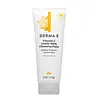What's inside
What's inside
 Key Ingredients
Key Ingredients

 Benefits
Benefits

 Concerns
Concerns

 Ingredients Side-by-side
Ingredients Side-by-side

Water
Skin ConditioningIsododecane
EmollientCetearyl Olivate
Cetyl Alcohol
EmollientNeopentyl Glycol Dicaprylate/Dicaprate
EmollientCaprylic/Capric Triglyceride
MaskingCitrus Aurantium Dulcis Peel Oil
MaskingSorbitan Olivate
EmulsifyingLimonene
PerfumingStearic Acid
CleansingGlyceryl Stearate
EmollientPEG-100 Stearate
Coco-Caprylate/Caprate
EmollientDecyl Glucoside
CleansingGlycereth-26
HumectantC10-16 Alkyl Glucoside
EmulsifyingGlycerin
HumectantXanthan Gum
EmulsifyingMagnesium Aluminum Silicate
AbsorbentEthylhexylglycerin
Skin ConditioningEugenia Caryophyllus Leaf Oil
MaskingRetinyl Palmitate
Skin ConditioningSodium Ascorbyl Phosphate
AntioxidantButylene Glycol
HumectantTocopheryl Acetate
AntioxidantYeast Polysaccharides
Skin ConditioningSodium Hydroxide
BufferingAscorbyl Palmitate
AntioxidantTocopherol
AntioxidantVitis Vinifera Seed Extract
AntimicrobialAlchemilla Vulgaris Extract
AstringentSaponaria Officinalis Leaf/Root Extract
Skin ConditioningPentylene Glycol
Skin ConditioningTromethamine
BufferingSuperoxide Dismutase
AntioxidantPhenoxyethanol
PreservativeEugenol
PerfumingWater, Isododecane, Cetearyl Olivate, Cetyl Alcohol, Neopentyl Glycol Dicaprylate/Dicaprate, Caprylic/Capric Triglyceride, Citrus Aurantium Dulcis Peel Oil, Sorbitan Olivate, Limonene, Stearic Acid, Glyceryl Stearate, PEG-100 Stearate, Coco-Caprylate/Caprate, Decyl Glucoside, Glycereth-26, C10-16 Alkyl Glucoside, Glycerin, Xanthan Gum, Magnesium Aluminum Silicate, Ethylhexylglycerin, Eugenia Caryophyllus Leaf Oil, Retinyl Palmitate, Sodium Ascorbyl Phosphate, Butylene Glycol, Tocopheryl Acetate, Yeast Polysaccharides, Sodium Hydroxide, Ascorbyl Palmitate, Tocopherol, Vitis Vinifera Seed Extract, Alchemilla Vulgaris Extract, Saponaria Officinalis Leaf/Root Extract, Pentylene Glycol, Tromethamine, Superoxide Dismutase, Phenoxyethanol, Eugenol
Water
Skin ConditioningGlycerin
HumectantSodium Methyl Cocoyl Taurate
CleansingPotassium Hydroxide
BufferingMyristic Acid
CleansingBehenic Acid
CleansingPalmitic Acid
EmollientLauric Acid
CleansingKaolin
AbrasiveOryza Sativa Powder
Stearic Acid
CleansingCurcuma Longa Root Extract
MaskingTitanium Dioxide
Cosmetic ColorantLauryl Lactyl Lactate
Skin ConditioningBentonite
AbsorbentHydroxyethylcellulose
Emulsion StabilisingCI 77492
Cosmetic ColorantPanthenol
Skin ConditioningTetrahexyldecyl Ascorbate
AntioxidantTocopheryl Acetate
AntioxidantSodium Ascorbyl Phosphate
AntioxidantEchinacea Purpurea Root Extract
MoisturisingEchinacea Purpurea Flower/Leaf/Stem Extract
Skin ConditioningEchinacea Angustifolia Root Extract
Skin ConditioningPhenoxyethanol
PreservativeWater, Glycerin, Sodium Methyl Cocoyl Taurate, Potassium Hydroxide, Myristic Acid, Behenic Acid, Palmitic Acid, Lauric Acid, Kaolin, Oryza Sativa Powder, Stearic Acid, Curcuma Longa Root Extract, Titanium Dioxide, Lauryl Lactyl Lactate, Bentonite, Hydroxyethylcellulose, CI 77492, Panthenol, Tetrahexyldecyl Ascorbate, Tocopheryl Acetate, Sodium Ascorbyl Phosphate, Echinacea Purpurea Root Extract, Echinacea Purpurea Flower/Leaf/Stem Extract, Echinacea Angustifolia Root Extract, Phenoxyethanol
Ingredients Explained
These ingredients are found in both products.
Ingredients higher up in an ingredient list are typically present in a larger amount.
Glycerin is already naturally found in your skin. It helps moisturize and protect your skin.
A study from 2016 found glycerin to be more effective as a humectant than AHAs and hyaluronic acid.
As a humectant, it helps the skin stay hydrated by pulling moisture to your skin. The low molecular weight of glycerin allows it to pull moisture into the deeper layers of your skin.
Hydrated skin improves your skin barrier; Your skin barrier helps protect against irritants and bacteria.
Glycerin has also been found to have antimicrobial and antiviral properties. Due to these properties, glycerin is often used in wound and burn treatments.
In cosmetics, glycerin is usually derived from plants such as soybean or palm. However, it can also be sourced from animals, such as tallow or animal fat.
This ingredient is organic, colorless, odorless, and non-toxic.
Glycerin is the name for this ingredient in American English. British English uses Glycerol/Glycerine.
Learn more about GlycerinPhenoxyethanol is a preservative that has germicide, antimicrobial, and aromatic properties. Studies show that phenoxyethanol can prevent microbial growth. By itself, it has a scent that is similar to that of a rose.
It's often used in formulations along with Caprylyl Glycol to preserve the shelf life of products.
Sodium Ascorbyl Phosphate is a form of Vitamin C. It is the salt of ascorbic acid.
This ingredient is more gentle than ascorbic acid. It is also more stable when exposed to light and oxygen.
Vitamin C helps reduce redness, improve skin texture, reduce the effects of aging, reduce the visibility of dark spots, and brighten skin.
Your skin uses Vitamin C to produce collagen and collagen production plays a role in having a strong skin barrier and plump skin. As an antioxidant, this ingredient also helps reduce the signs of aging such as fine-lines and wrinkles.
VItamin C helps brighten skin by blocking the process of skin darkening.
In a 2011 study, Sodium Ascorbyl Phosphate was found to have antibacterial properties. This may help treat acne.
Read more about other types of Vitamin C:
Learn more about Sodium Ascorbyl PhosphateStearic Acid is a fatty acid. It is an emollient, emulsifier, and texture enhancer.
As an emollient, stearic acid helps soften skin. It aids the skin's protective barrier by preventing water loss. It also provides a gentle cleansing effect without stripping away natural oils.
Stearic acid may also be used to enhance the texture of products. It can add volume and stabilize ingredients such as water and oil. This can help water and oil ingredients from separating.
Sources of stearic acid include animal or vegetable fats/oils such as coconut or shea. It can be naturally found in butter, cocoa butter, shea butter, vegetable fats, and animal tallow.
This ingredient may not be Malassezia folliculitis, or fungal-acne safe.
Learn more about Stearic AcidTocopheryl Acetate is AKA Vitamin E. It is an antioxidant and protects your skin from free radicals. Free radicals damage the skin by breaking down collagen.
One study found using Tocopheryl Acetate with Vitamin C decreased the number of sunburned cells.
Tocopheryl Acetate is commonly found in both skincare and dietary supplements.
Learn more about Tocopheryl AcetateWater. It's the most common cosmetic ingredient of all. You'll usually see it at the top of ingredient lists, meaning that it makes up the largest part of the product.
So why is it so popular? Water most often acts as a solvent - this means that it helps dissolve other ingredients into the formulation.
You'll also recognize water as that liquid we all need to stay alive. If you see this, drink a glass of water. Stay hydrated!
Learn more about Water